Is there some truth in the Esfahani proverb: “ Esfahan Nesf-e Jahan ” or “ Esfahan is Half of the World ”? Discovering this city will most probably be the highlight of everyone’s visit to Iran, offering some of the finest architecture of the whole country, and actually some of the finest architecture I experienced altogether during my many trips.
Deservedly, it has now also turned into the most touristic town in Iran: you will encounter here loads of (large) tour groups at most places, and it is actually quite a challenge to escape the crowds… And unfortunately, this is not without consequences: here you feel clearly that tourism is taking its toll, and that the friendliness and genuine interest towards tourists I had experienced only 3 years ago turned into sheer indifference or even some more unpleasant aspects like touts at many touristic highlights!
There is a lot to do and see in Esfahan, and you should plan enough times to discover the many highlights – Calculate at least 3 days, maybe even more! Nonetheless, beware that this is not exactly the place where you might go Off The Beaten Track…
Imam Square
Plan enough time to discover Maydan-e Imam or Imam Square, the very center of Esfahan, a place of unparalleled beauty! You should come there at least three times to experience the place at different times of the day: once to visit the different mosques and palaces (opening hours are limited, and around noon tours will be having lunch, so this might be your best bet); once at the end of the afternoon to enjoy the soft light of the setting sun and the milder temperatures to observe the many Esfahani families and friends that gathered here for a tea or a picnic or simply a chat; and once at night to enjoy the beauty of the buildings, mosques & palaces brightly lit.
The sheer dimensions of this square are breathtaking: 512 meters long and 163 meters wide! This UNESCO World Heritage sight was designed to showcase the finest jewels of the powerful Safavid Empire. It was built in the beginning of the 17th Century by Shah Abbas the Great. The name Naqsh-e Jahan means ‘Pattern of the World’.
But you do not only come here for the very square, one of the largest in the world (and free of cars, yes, this is possible even in Iran!), but also for the impressive buildings that surround it: the incomparable Masjed-e Shah; the elegant Masjed-e Sheikh Lotfollah; the lavishly decorated Kakh-e Ali Qapu; the Qeysarieh Portal, the entrance of the Imperial Bazaar
Masjed-e Shah
The Shah Mosque, also known as Imam Mosque after the Iranian Revolution, stands on the south side of Naghsh-e Jahan Square.
It is regarded as one of the masterpieces of Persian Architecture of the Islamic Era, and is also listed as a UNESCO World Heritage site. Its construction began in 1611, and its splendor is mainly due to the beauty of its seven-color mosaic tiles and calligraphic inscriptions.
- Masjed-e Shah
- Masjed-e Shah
Masjed-e Sheikh Lotfollah
The Lotfollah Mosque, opposite the palace, was the first to be built around the Naqsh-e Jahan Square. Its purpose was to be a private mosque for the Harem of the Shah, which explains why this mosque does not have any minarets and is of a smaller size. For Centuries, this mosque was not accessible to the public. The exquisite tile-work is actually far superior to those covering the Shah Mosque.
- Masjed-e Sheikh Lotfollah
- Masjed-e Sheikh Lotfollah
- Masjed-e Sheikh Lotfollah, Esfahan
- Masjed-e Sheikh Lotfollah, Esfahan
Ali Qapu Palace
Ali Qapu Palace is just a pavilion that marks the entrance to the vast royal residential quarter. The name is made of two elements: “Ali” or “Exalted” in Arabic; and “Qapu” or “Portal” in Turkish. This “Exalted Portal” is the Persian answer to the “Sublime Portal” of the Ottomans… A large and massive rectangular structure, the Ali Qapu is 48 meters high, and fronted with a wide terrace from which one has an impressive view of the Imam Square.
- Kakh-e Ali Kapu
- Kakh-e Ali Kapu
The Imperial Bazaar
Through the Qeysarieh Portal, you reach the Imperial Bazaar, one of the oldest and largest Bazaars oft he Middle East. Unfortunately, this Bazaar is now only made for tourists and offers in my opinion very little interest…
Masjed-e Jameh or Jameh Mosque
The Jameh Complex is a veritable museum of Islamic Architecture while still functioning as a busy place of worship. Covering more than 20,000 square meters, this is the biggest mosque in Iran! Religious activity on this site is believed to date back to the Sassanid Zoroastrians, with the first sizeable mosque being built over temple foundations by the Seljuks in the 11th Century. In the center of the main courtyard, which is surrounded by four contrasting Iwans, is an ablutions fountain designed to imitate the Kaaba at Mecca.
- Masjed-e Jameh, Eshahan
- Masjed-e Jameh, Eshahan
Over the Centuries, the Jameh Mosque has undergone numerous remodeling and renovations, and now offers an eclectic mix of Islamic Architecture, featuring contributions from the Seljuks, the Mongols and the Safavids. The two Seljuk brick domes are arguably the mosque’s most impressive part, although the entire complex is stunning.
Hammam-e Ali Gholi Agha
It’s quite a walk to reach this Hammam built in the beginning of the 18th Century. Now a museum, this hammam sports a set of costumed mannequins that help to demonstrate the purpose of each part of the bathhouse. There are some wonderful details to admire, including a hunting scene interpreted in tiles and beautiful rich marble flooring.
- Hammam-e Ali Gholi Agha, Esfahan
- Hammam-e Ali Gholi Agha
- Hammam-e Ali Gholi Agha
- Hammam-e Ali Gholi Agha, Esfahan
Kakh-e Chehel Sotun
I really wanted to visit this Palace, but had overseen that it would be closed during the Ashura… For more information, check what The Culture Trip wrote about it.
Bridges On The Zayandeh River
The truly sad story about Esfahan is the dried up Zayandeh River. Its riverbed does not even show a small puddle, making beautiful old bridges like Si-O-Se Bridge rest in a dire-looking flat terrain of gravel. Why is that? The precious liquid is diverted upriver, around the area of Yazd, watering pistachio farms and used for making tiles (the desert sand providing unlimited material to do so) in the many factories around Yazd. Of course, the lack of rain has added to the problem.
The consequences are severe, the otherwise many birds have lost their natural habitat and the foundations of the bridges suffer we were told. Only for three months out of the year the water is allowed to flow through beautiful Esfahan. Needless to say, Esfahani are outraged about what they consider gross political mismanagement…
Esfahan’s Parks
One of Esfahan’s draw cards are the many parks, like a string of pearls that merges into each other. And they are used – groups of retired men chat on shaded benches, young couple hold hands in the shadow of orange tree, families enjoy a picnic, but they never seem crowded because of the sheer size of these evergreen oxygen donors.
Jolfa – The Christian Quarter of Esfahan
This neighborhood has an almost Mediterranean flair: small alleys all lined with trees, cafés and chic restaurants. Throngs of young people stroll the sidewalks. The girls are elegant & stylish. Trendy clothes shops that would never make you guess of where you are dot the streets: obviously Iranians dress – especially women – very differently in private.
The Armenian Christians were brought here many centuries ago from the town of Julfa in northern Iran. Nowadays the 7.000 Christians in Esfahan can choose between 17 churches, with Vank Cathedral dominating the scene. When I visited it, it was full with Iranian tourists who stared – wide-mouthed – at the gigantic frescos. Naked people were pushed into the flames by black human-like creatures with the help of huge forks. Besides the blackness, it was the horns on their heads that made them look different from the poor sinners they desperately tried to keep down in hell. Other murals showed Christian martyrs being tortured in the most sadistic ways.

Holy Savior Cathedral, or Vank Cathedral or The Church of the Saintly Sisters, in the Armenian District Jolfa of Esfahan
- Vank Cathedral, Esfahan
- Vank Cathedral, Esfahan
Pigeon Tower
The outside of this terracotta colored circular tower would never give away their very purpose – ancient guano factories. The inside is intriguing, a dazzle of geometrical patterns, a maze of corridors, floors and levels that make you feel lost easily. But the birds feel comfortable and clean. Each one has its small cubicle and when sitting on the roosts, the droppings fall straight onto the floor. All this is still intact, but only a few odd pigeons reside here now. Nothing compared to the 4.000 pigeons that would live in each of those once 300 towers. Nowadays, only a couple of these guano producers are left.
- Pigeon tower, Esfahan
- Pigeon tower, inside, Esfahan
Jewish Cemetery of Pir-e Bakram
Esfahan has all religions. Actually, in the past, Esfahan had the largest Jewish Community of Iran. Today about 25.000 Jews still live in larger cities and have rejected generous financial offers by Israel to move to the Promised Land. An old Jewish cemetery can be visited in the small town of Pir-e-Bakran outside of Esfahan, if the taxi driver has the phone number of the gatekeeper. Mine did. Strolling around the extensive graveyard I also discovered some recent graves, which is not a complete surprise, because every year Jews from around the world gather here to celebrate the Jewish New Year. Small, very basic rooms inside the complex accommodate the visitors.
- Jewish Cemetery of Pir-e Bakram
- Jewish Cemetery of Pir-e Bakram
Safeh Mountains
A few kilometers from the city center is Sofeh Mountain – an area that promises clean air and spectacular views of the city. You can reach its summit either through hiking or via cable car. Sofeh is an excellent spot for outdoors recreation if you need a break from the commotion of the city – But it was closed when I wanted to discover it, due to the Ashura…





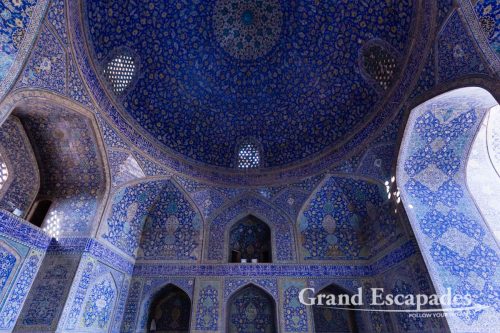
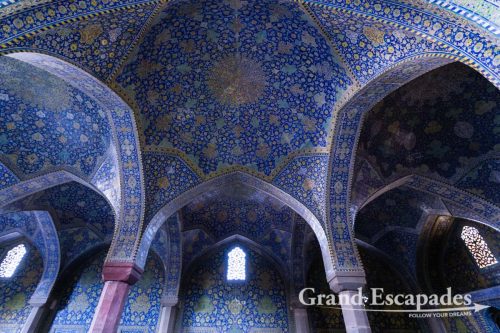




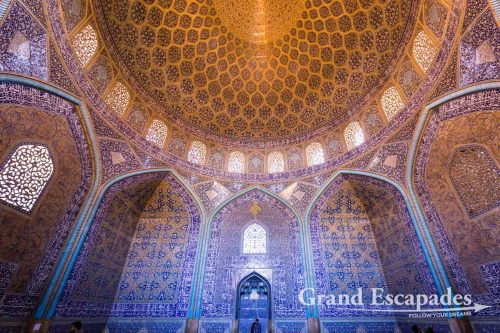



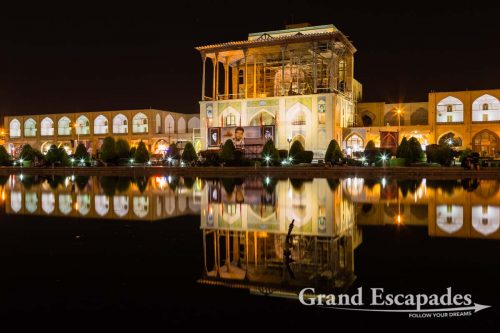

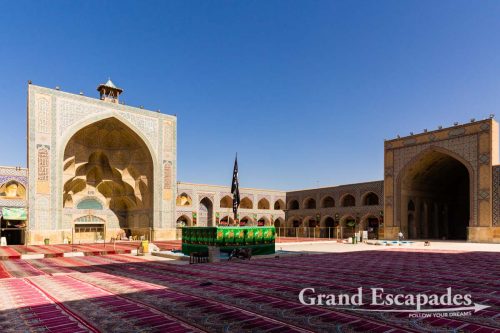
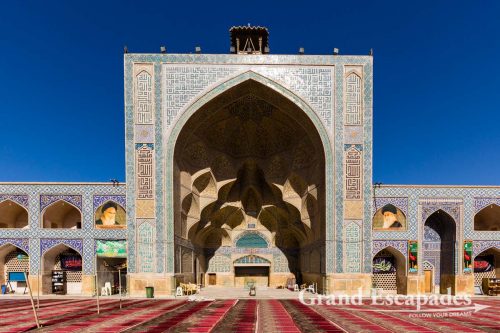


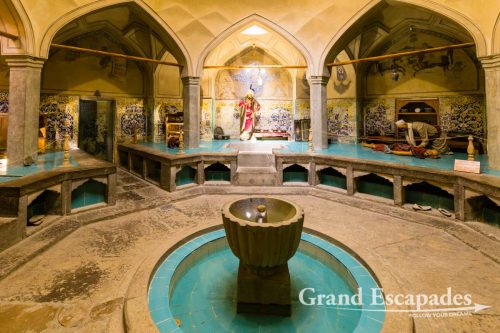
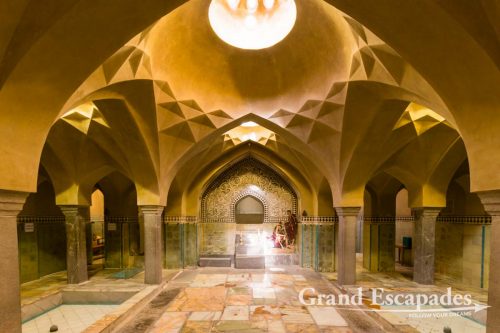
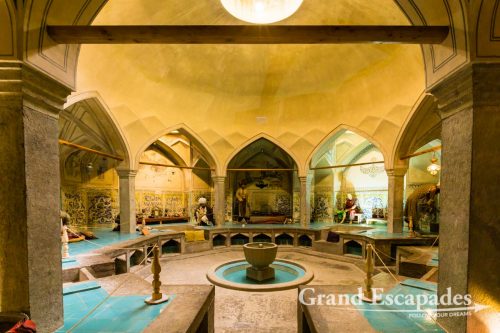





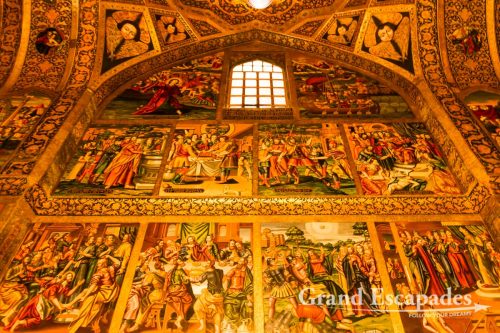
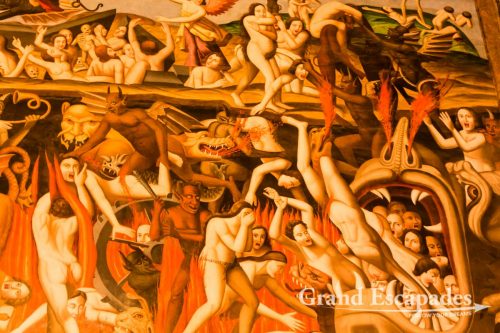

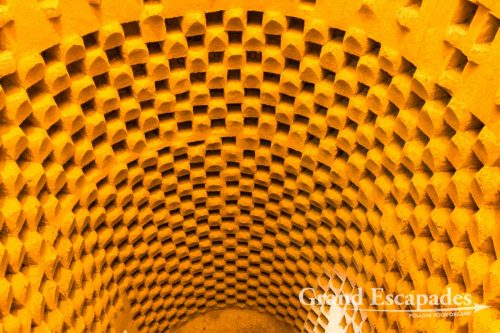
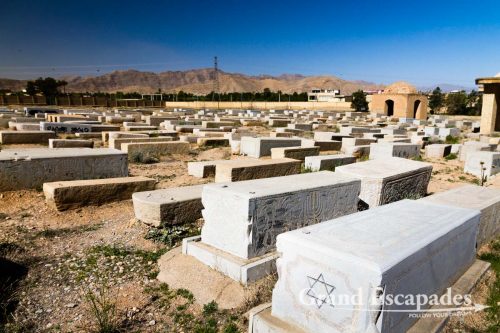

Comments are closed.